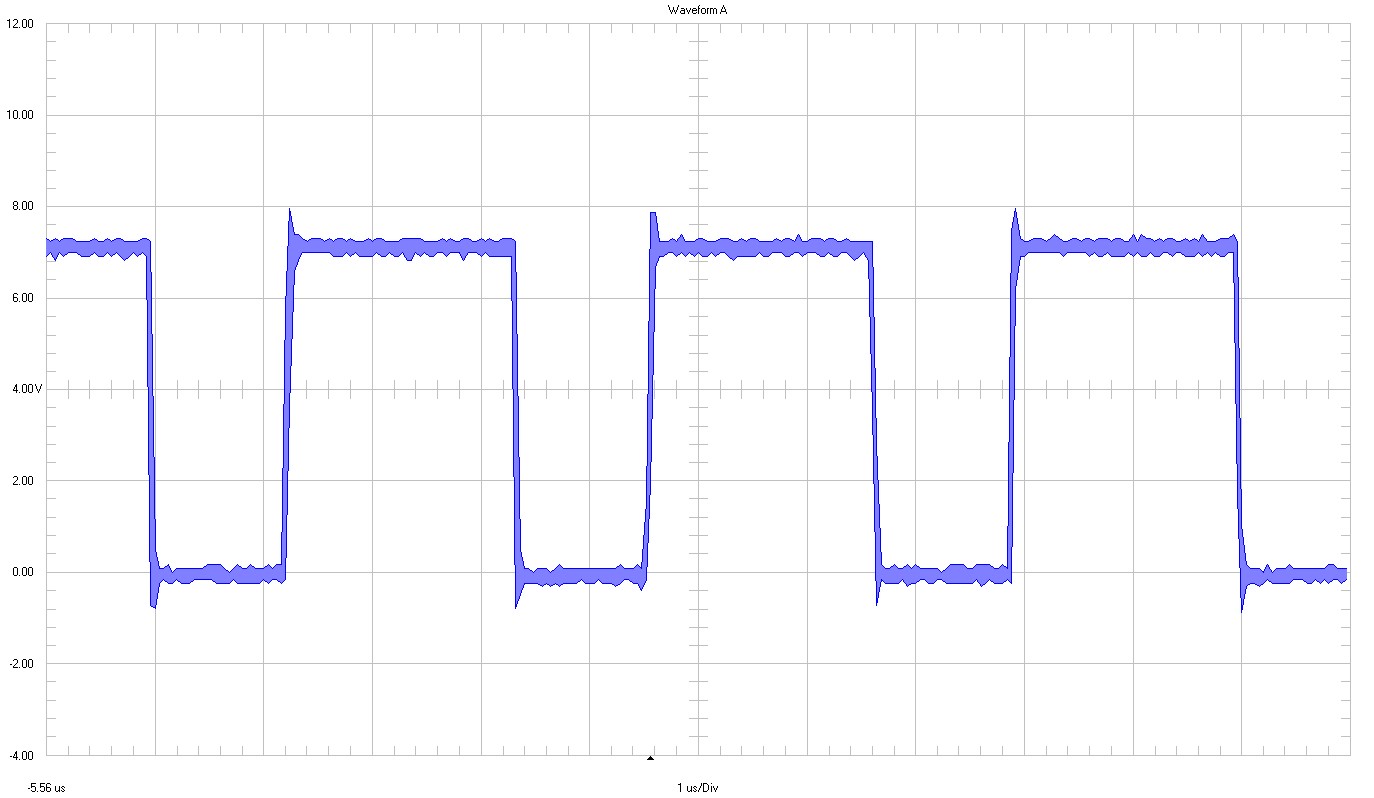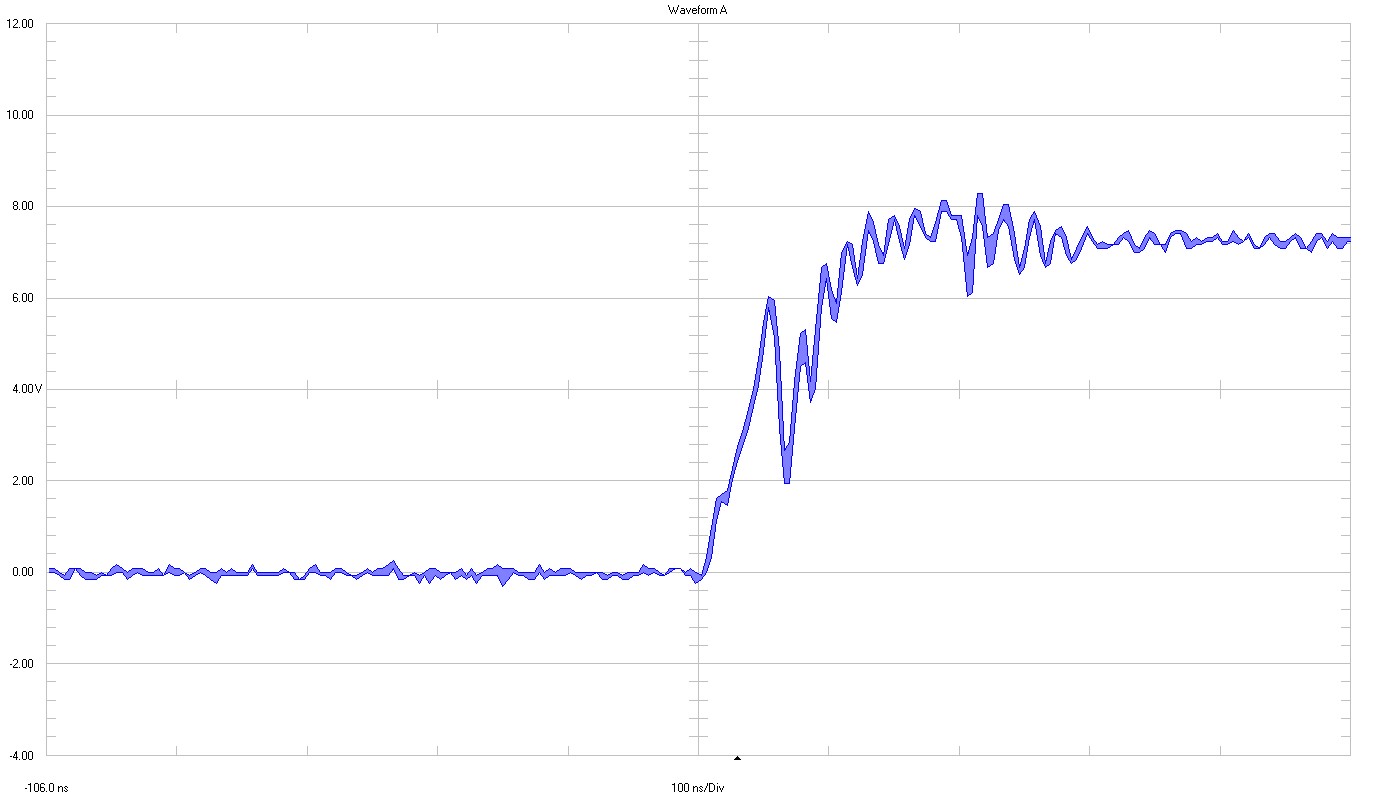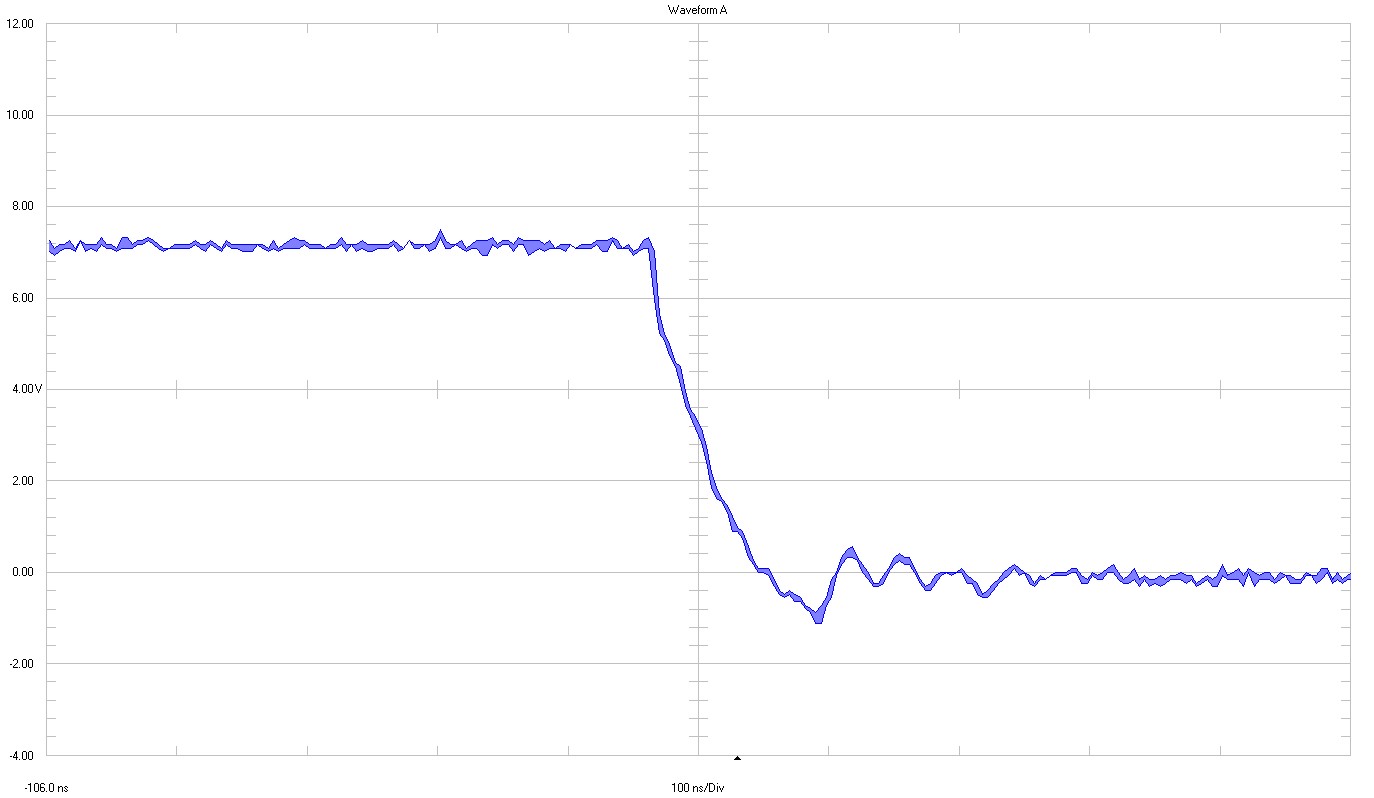TIDT281 June 2022
- Description
- Features
- Applications
- 1Test Prerequisites
- 2Testing and Results
-
3Waveforms
- 3.1 Switching
- 3.2 Output Voltage Ripple
- 3.3 Input Voltage Ripple
- 3.4 Load Transients
- 3.5 Start-Up Sequence
- 3.6 Shutdown Sequence
3.1.3.2.2 Gate-GND
Note: The final application uses FETs with much lower gate charge QG. A gate resistor
(3.3 Ω to 4.7 Ω) might reduce the ringing on the gate.

|
2 V / div 1 µs / div full bandwidth |
|

|

|
2 V / div 200 ns full scale full bandwidth |
Figure 3-15 Transistor Q2 Gate -
GND